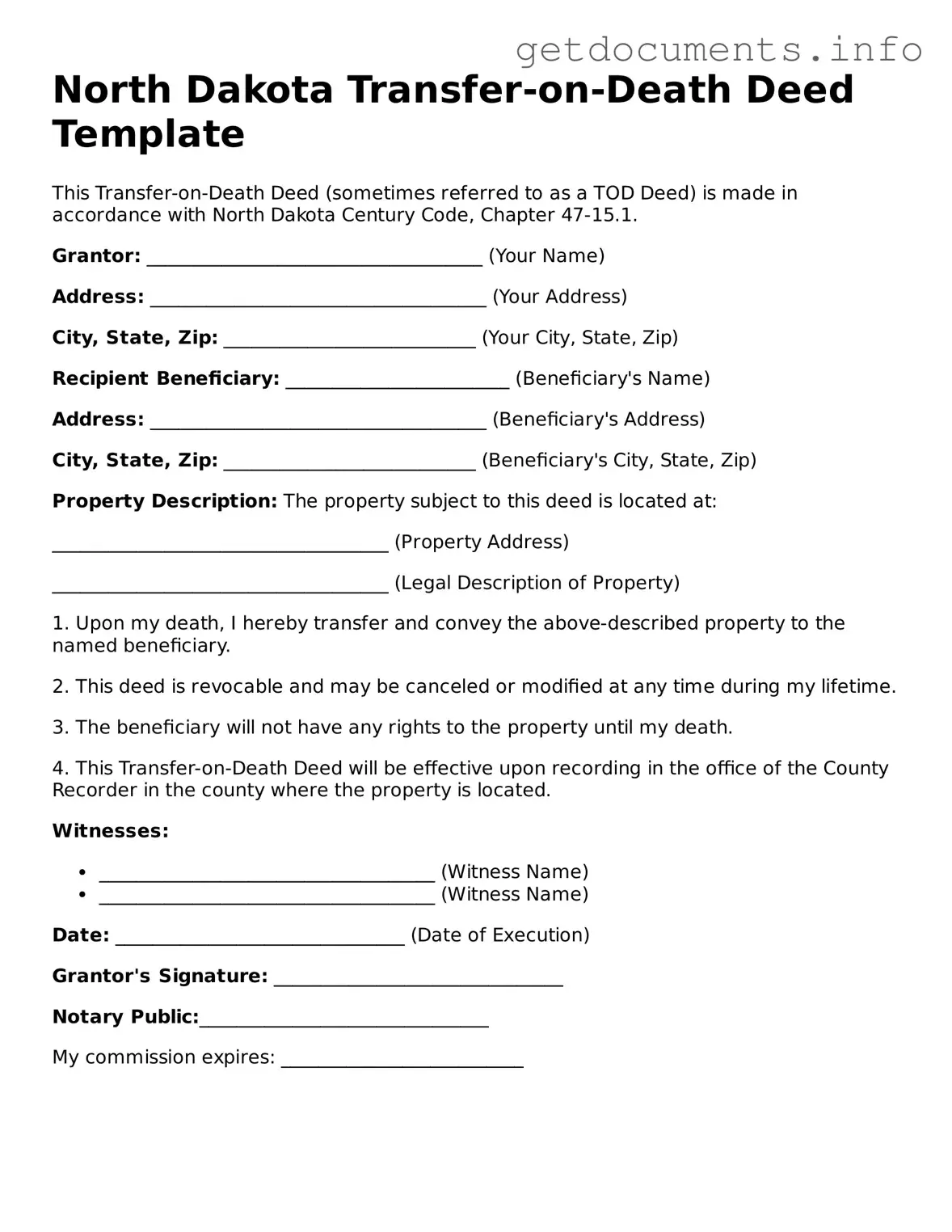Free Transfer-on-Death Deed Template for North Dakota
The North Dakota Transfer-on-Death Deed form allows property owners to transfer their real estate to beneficiaries upon their death, without the need for probate. This simple tool helps ensure that your property goes directly to your loved ones, making the process smoother and more efficient. Ready to get started? Fill out the form by clicking the button below.
Access Transfer-on-Death Deed Editor
